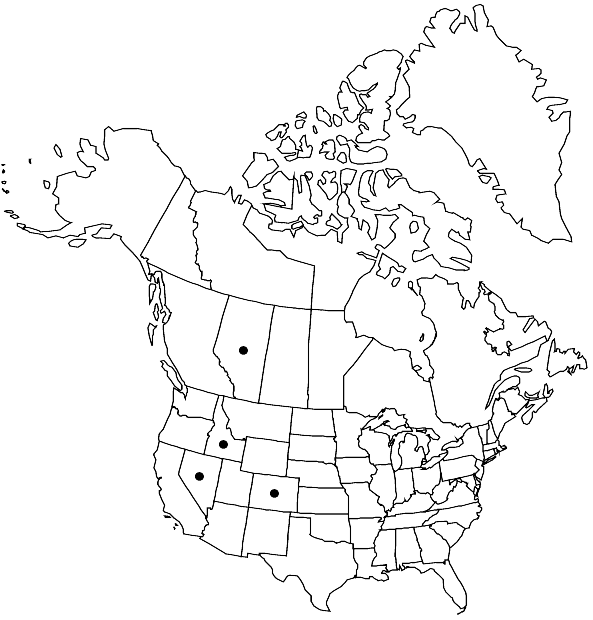Schistidium flaccidum
Nova Hedwigia 48: 94. 1989,.
Plants in cushions, olivaceous, light brown, or green. Stems 0.5–2 cm, central strand indistinct. Leaves erect or weakly curved when dry, ovate-lanceolate to ovate-triangular strongly keeled distally, 1.3–1.9(–2.4) mm, 1-stratose, rarely with a few 2-stratose striae distally; margins recurved to just before the apex, smooth, 2-stratose with 1-stratose patches; apices acute; costa excurrent as an often long, finely denticulate, straight or flexuose, and sometimes decurrent awn, often embracing part of the lamina, rarely percurrent, smooth; basal marginal cells short-rectangular, usually with transverse walls thicker than longitudinal walls; distal cells mainly ovate or short-rectangular, 7–10 µm wide, smooth, straight or slightly sinuose. Sexual condition autoicous. Capsule orange-brown or yellow-brown, cupulate, 0.6–0.9 mm; exothecial often irregularly angular, short-elongate or isodiametric, thin-walled or slightly thickened, occasionally with small trigones; rim red; stomata present; operculum mamillate; peristome absent or rudimentary, consisting of basal segments, to 30 µm, yellowish or orange-red, papillose. Spores 8–10 µm, granulose or verruculose.
Phenology: Capsules mature late spring to early summer.
Habitat: Rock in open to shaded habitats
Elevation: moderate to high elevations (1500-3200 m)
Distribution

Alta., Colo., Idaho, Nev., Eurasia, Africa, Atlantic Islands, Pacific Islands.
Discussion
Schistidium flaccidum is characterized by long and broad-based awns, light-colored capsules with red rims, the rudimentary peristome, and the mamillate rostrum. For comparison to the similar arctic taxon 10. S. cryptocarpum, see the discussion thereunder.
Selected References
None.